Distinguished Critique: Batman: Strange Apparitions Review
This slice of 70s Batman comics collects a classic run with incredible characterization and grounded storytelling from talented creators
—by Nathan on June 23, 2025—
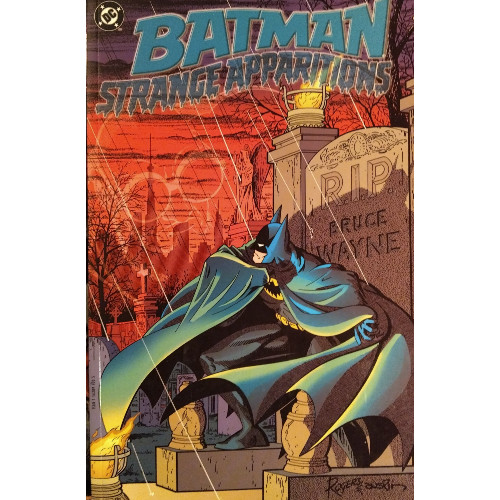
When I was younger, I generally read comics for two reasons: either Spider-Man starred in a story or my dad picked it up for me. Before I had the wherewithal to determine what I wanted to read or what was good, and back when I was at an age where my dad wanted to be a bit more selective in what I read, I was largely unaware of the broader scope of comics. Spider-Man's on the cover? And it's age-appropriate? Done deal.
As I grew older, I became more discerning. I started picking up stories because I knew they were classics, or they were connected to another story I had read, or they were written and/or illustrated by a creator I enjoyed. It's only more recently that I've tried reading a wider breadth of stories connected to specific creators. Generally, in times past, that occurred because of happenstance. I picked up an Iron Fist Epic Collection on a whim only to happily discover Chris Claremont and John Byrne, of "The Dark Phoenix Saga" fame, were responsible for several of the stories within. It works the other way, too: as someone who is not a fan of Mike Barr's "Batman: Year Two," I, with some reluctance, waded into his contributions to the "Demon Trilogy" of Batman graphic novels.
So I've become more aware of different writers and artists, whose work I appreciate and whose contributions I feel less fondly toward. I have created a scale, somewhat, of which creators I prefer over others, and I'll admit to be somewhat disappointed when a creator I heartily applaud produces a less-than-stellar narrative. And I feel that scale has gaps, spots for creators whose work I have not yet tasted and tested or whose work I have forgotten I perused previously.
Which brings us to Steve Englehart.
Englehart is a writer who I have been aware of but has flown under my personal radar for a while now. Some writers I react to when I hear their names–I think of their stories, whether I love or hate them. Englehart never stirred anything in me, and from looking his name up on my blog, I sort of see why. He wrote the DC event Millennium, which I was lukewarm towards. He contributed to a "sequel" to Contest of Champions, which I was also lukewarm towards. I reviewed a volume of Captain Marvel comics he contributed to, but he was overshadowed by Jim Starlin. And he also wrote Silver Surfer issues making up part of Marvel's "Atlantis Attacks" and "The Evolutionary War" crossovers during the 80s, and I was not at all highly favorable to either narrative.
I just haven't had a ton of exposure to Englehart, and the works of his I have read have usually included other contributors. What I needed, I realized, was to dive into a story Englehart controlled, find a volume that was all his work. Lucky me, I realized I'd picked up a volume of Detective Comics issues he scripted, precisely because I kept hearing they were solid stories. I'd seen these stories, collected as the Strange Apparitions trade, spoken alongside classics like "Year One," The Dark Knight Returns, The Long Halloween, The Killing Joke, and Arkham Asylum: A Serious House on Serious House. What could be a better showcase than one writer (with a little bit of help from Len Wein), doling out his vision of who he believes Batman to be?
So no strange apprehensions diving into Strange Apparitions, then.
Batman: Strange Apparitions
Writers: Steve Englehart, Len Wein
Pencilers: Walt Simonson, Marshall Rogers
Inkers: Terry Austin, Al Milgrom, Dick Giordano
Colorists: Marshall Rogers, Jerry Serpe
Letterer: Ben Oda, Milton Snapinn, John Workman
Issues: Detective Comics #469-476, Detective Comics #478
Publication Dates: May 1977-June 1977, August 1977-September 1977, November 1977-December 1977, February 1978-April 1978, July 1978-October 1978
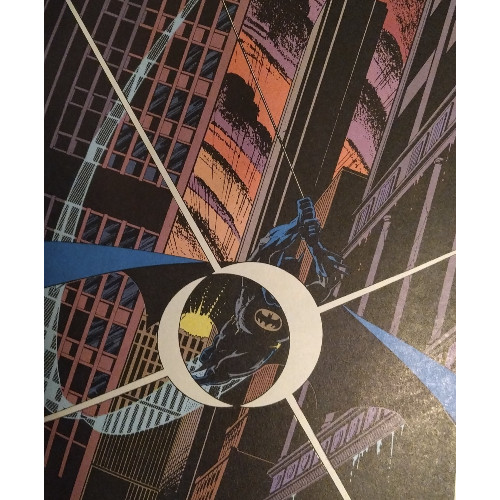
Picture being a Batman fan since his earliest adventures–as in, since Batman #1, published in 1940. Imagine being introduced to a cerebral villain named Hugo Strange, who then dies in Detective Comics #46 later that year. Picture watching villains like the Joker, Two-Face, and the Penguin return, time and again or seeing new villains, like that immortal Ra's al Ghul guy, take center stage. But what about Hugo Strange? Where is he? Why does he stay dead? And then imagine, 37 years later, picking up an issue of Detective Comics where Strange makes his triumphant return.
I don't know the number of die-hard Hugo Strange fans who cheered when the villainous psychiatrist revealed himself as a secret villain near the end of Detective Comics #471. I feel certain Englehart was one of them when he lit upon the idea of bringing one of Batman's first-ever foes from the grave. And that's the emotional summation of this volume: a return. We're jumping back in time to these 1970s comics, which endeavors to capture the spirit of an even earlier time and earlier characters…while also recognizing the need to maintain momentum, moving forward and evolving.
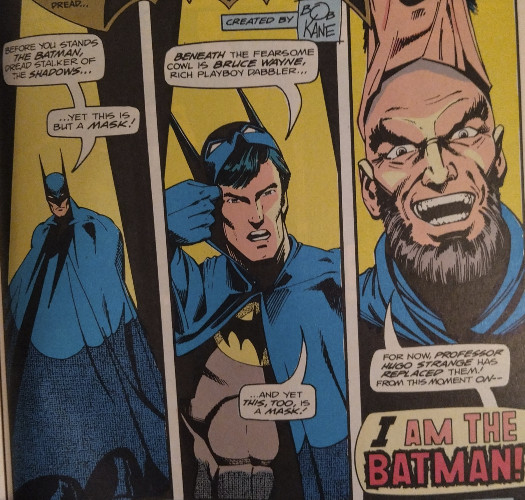
Ra's al Ghul had been a new kind of villain for a new era of Batman comics–writer Sam Hamm says so himself in the introduction to the Tales of the Demon volume I reviewed. He wasn't just your average bank robber who sported a goofy costume and goofier name. Al Ghul tapped into primal fears by expanding his threat globally, promising extinction to a world seemingly broken beyond repair. Englehart, throughout this volume, twists the kind of menace a villain like Ra's al Ghul generates, in two ways: first, he pulls inward, making their threats just as deadly but more local, more personal. Second, he's less interested in exploring darkness through new faces and more interested in finding the darkness in old ideas. If Ra's al Ghul represented a new kind of villain for a then-modern world, Englehart shows it doesn't take much to gussy up the old shadows to make them continuously threatening and relevant.
I have noted readers point to the Dennis O'Neil/Neal Adams work on Batman as marking the vigilante's early transition from "silly dude in bat ears" to "brooding vigilante," but after reading this volume, I feel certain we can throw Englehart's work in there too. Paired primarily with Roger Marshall, Englehart brings a gravitas and grimness to the book to steer the image of Batman away from anything silly or campy.
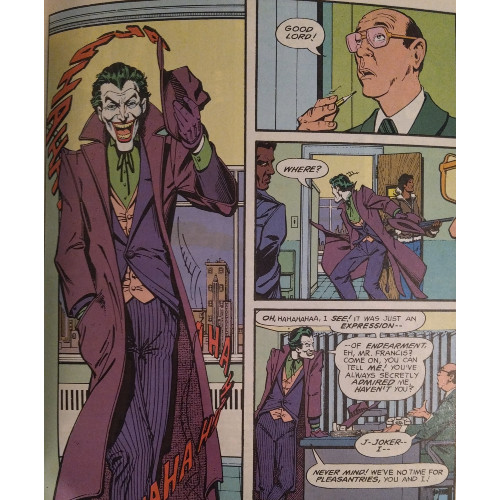
Englehart's villains shine in this volume, from the reintroduced Hugo Strange, to the redesigned Deadshot, to the bloodthirsty, vengeance-driven Joker. This volume contains the popular two-part Joker story where the Clown Prince of Crime begins killing people over a "copyright dispute" with fish (you may be familiar with the Batman: The Animated Series' less-lethal adaptation). Englehart's Joker is a wicked balance of humor and horror, cracking jokes even as he breaks into business offices, threatens people, kills his own henchmen, and battles Batman during a spectacular rooftop chase. This Joker is a killer and a mastermind, his gags deadly, seemingly a step or two ahead of Batman the whole time.
Dr. Hugo Strange, likewise, is positioned as a brilliant madman, a combination of genius and maniac. I'm not aware how this evil "Dr. Strange" behaved in his original appearance, but Englehart expertly balances a shrewd cunning with a singular obsession. The dude's a shrink in need of some psychiatric help himself, go figure. Though his threat towards Batman is physical in nature, he also introduces a psychological element to their warfare, briefly assuming the identity of Bruce Wayne and adding an element of identity Englehart plays with throughout the issues. Deadshot, too, receives a facelift, given the armored costume fans of John Ostrander's Suicide Squad will be most familiar with and made more serious than a guy running around in a tophat and tuxedo. With Strange and Deadshot, Englehart reaches into the past to see what can be modernized in a Silver Age context.

Batman, too, is grounded, in the same way I mentioned Englehart bringing in some grim material. Again, this isn't Batman fighting aliens or clowns flinging pies. This is Batman fighting a clown who successfully murders other enemies. This is Batman battling an assassin who traded in a tophat and tuxedo for body armor and wrist-mounted guns. This is…Bruce Wayne, who fosters an ongoing romantic relationship? Englehart eventually bows to the tried-and-true theme of not allowing most superheroes to have successful ongoing love lives but he works to make Bruce's then-female companion, Silver St. Cloud, a genuinely interesting character invested in her relationship with Bruce, even when the shadow of the bat threatens to undo their work.
I don't know enough about Batman's Golden Age/Silver Age history to determine Englehart's feeling towards the character's past, but he seems largely uninterested in exploring the same stories with the same characters creators resorted to in the wake of the crackdown on comic book content. His and Marshall Rogers' work is electric, bringing this new seriousness to the characters they craft and the tales they tell. I can't believe I'm saying this given the man's track record, but I found Walt Simonson's work in the volume's opening chapters weaker in comparison to Rogers' contributions. Turning the page from #470 from #471 shows the difference in style excellently and showcases the level of detail Rogers delivers in each panel, supported by Terry Austin's inks. Rogers is a genuine storyteller, and his manipulation of panel payouts maximize the effectiveness of his art, whether he's giving full panel pages of Batman swinging in-between skyscrapers or a quick succession of panels suggesting emotional changes in a character's face or providing quick action during a fistfight.
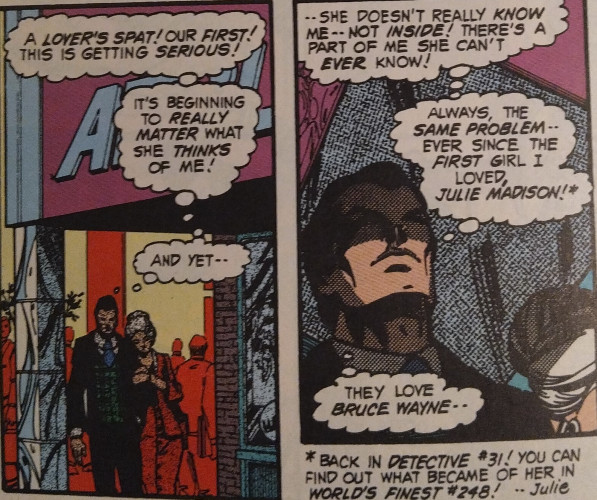
Some goofier bits slip in here and there–the Englehart/Simonson tale focusing on Doctor Phosphorus feels more akin to the earlier Silver Age material readers would have found in these books, as does a fairly hum-drum mystery surrounding the Penguin. But these smaller, forgetful stories are minor concerns when reading a volume containing a grounded Batman, a killer Joker, a devious Huge Strange, or even a uniquely sympathetic third Clayface. Englehart brings the Marvel method of focusing on human characters first, superhuman adventures second. And because Batman's already a regular guy, some of Englehart's work is done before he even puts pen to paper, giving him the rich foundation for stories which remind us how human the Dark Knight Detective is.
I'm not sure if Englehart intended to write much more than what is collected in this volume, but I did find myself wishing a subplot he introduced had been resolved in the issues contained here. A ghostly specter haunts gangster Boss Thorne, a subplot generated from events earlier in the volume, popping up periodically to remind him of a particular past misdeed. This narrative remains unresolved by time the volume ends, somewhat upsetting the collection's title. Yes, there is an apparition, and it certainly is strange (in more ways than one), but the ghost's random encounters with Thorne are left at that–random. I would have assumed, and did wish, with the collection titled as it is, that particular narrative would have carried more heft or been at least concluded.
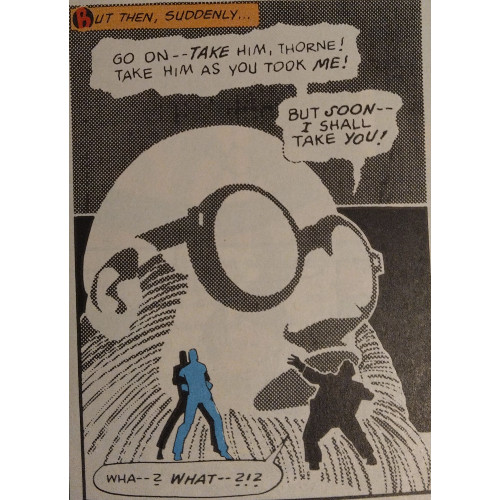
I've been trying to get into some other 70s narratives lately, and though my experience pales in comparison to what I've read from the 80s, I've generated a list of narratives I consider fondly. Roy Thomas and Neal Adams' work on X-Men, along with Chris Claremont and Dave Cockrum's earliest contributions; Adams' collaboration with Dennis O'Neil on Green Lantern/Green Arrow, as well as the aforementioned Ra's al Ghul tales; and other classic Marvel tales such as "Demon in a Bottle," "The Death of Gwen Stacy," "Panther's Rage," and Jim Starlin's work on Captain Marvel and Warlock. I found Strange Apparitions just as compelling as these narratives. Put this volume on the shelf alongside those others. Save from some goofiness early in the volume, these issues hold up–mark Englehart and Rogers as another pair whose work I now deeply respect.